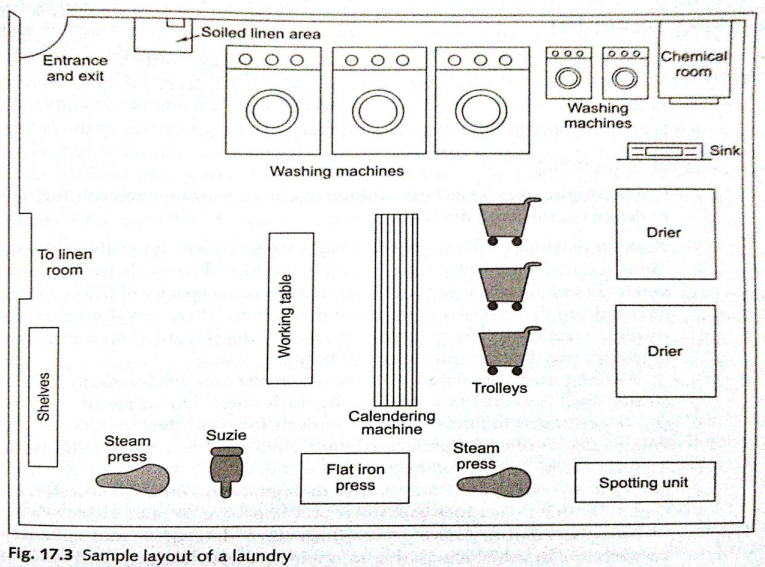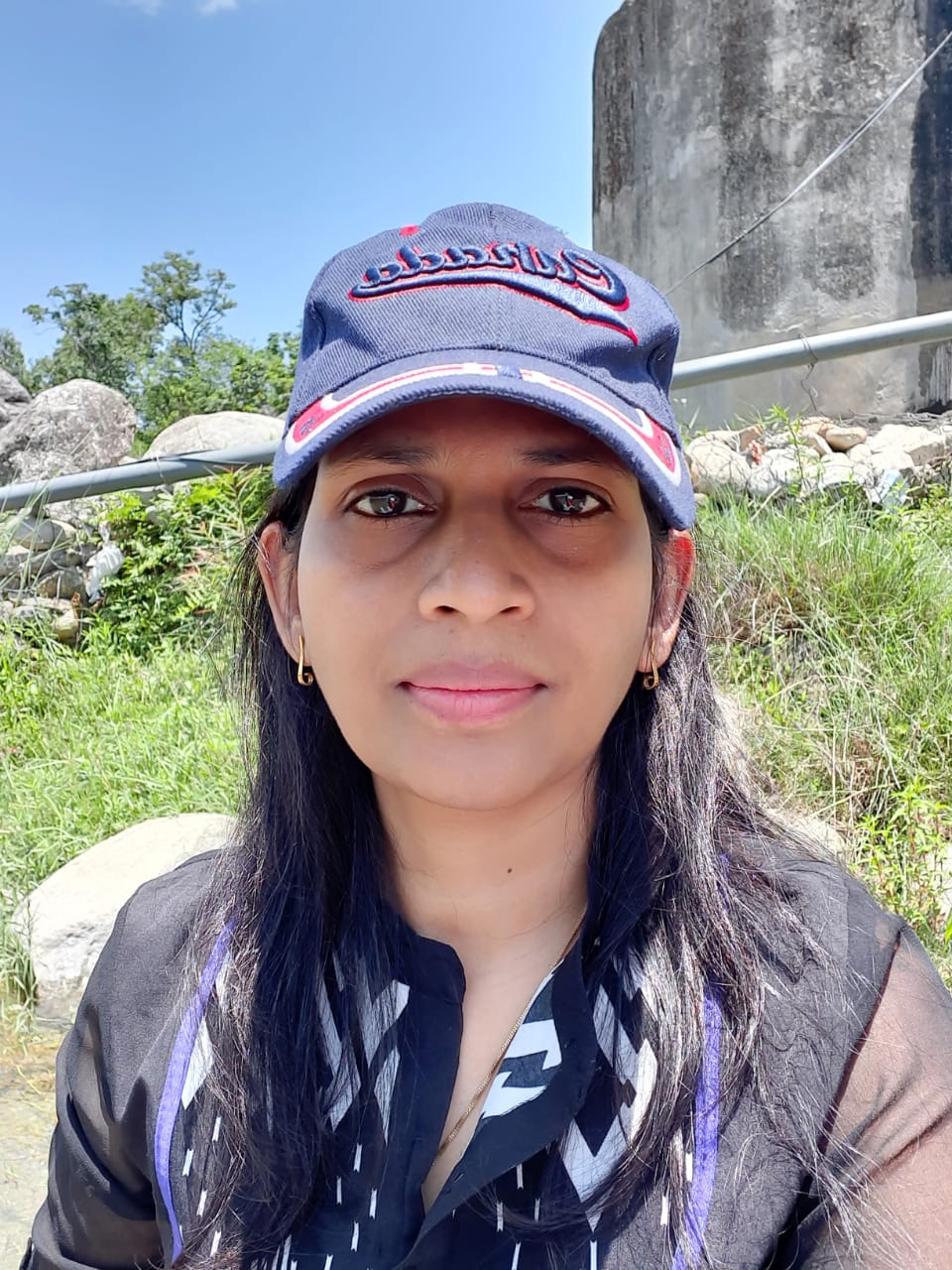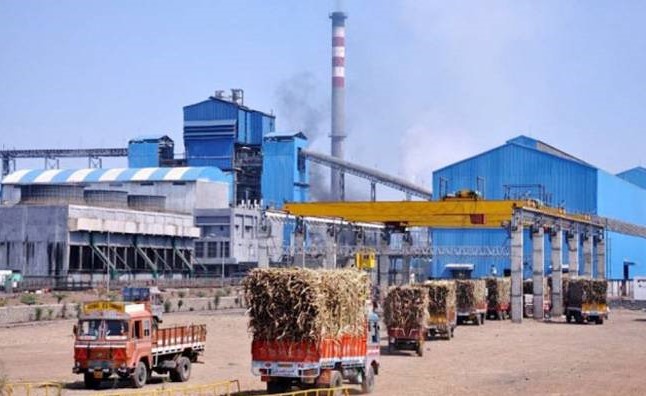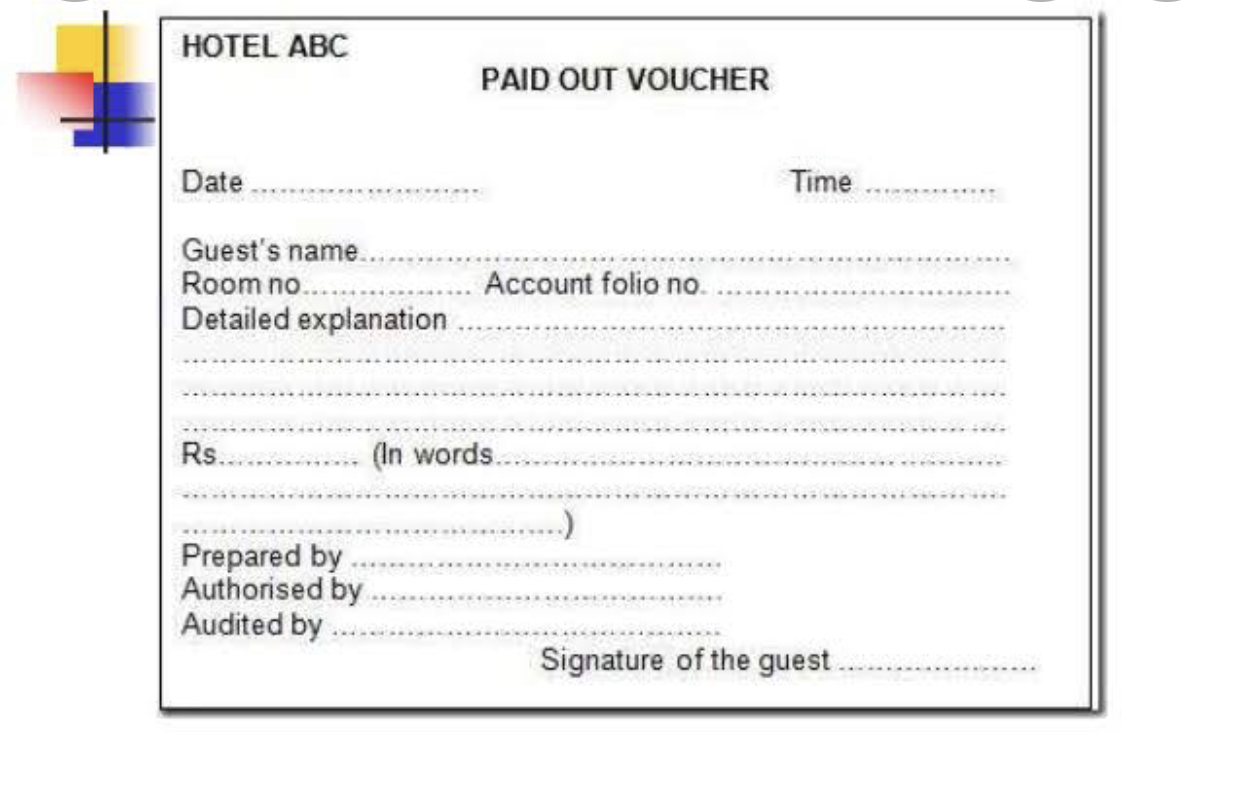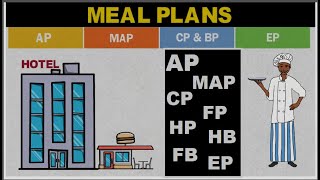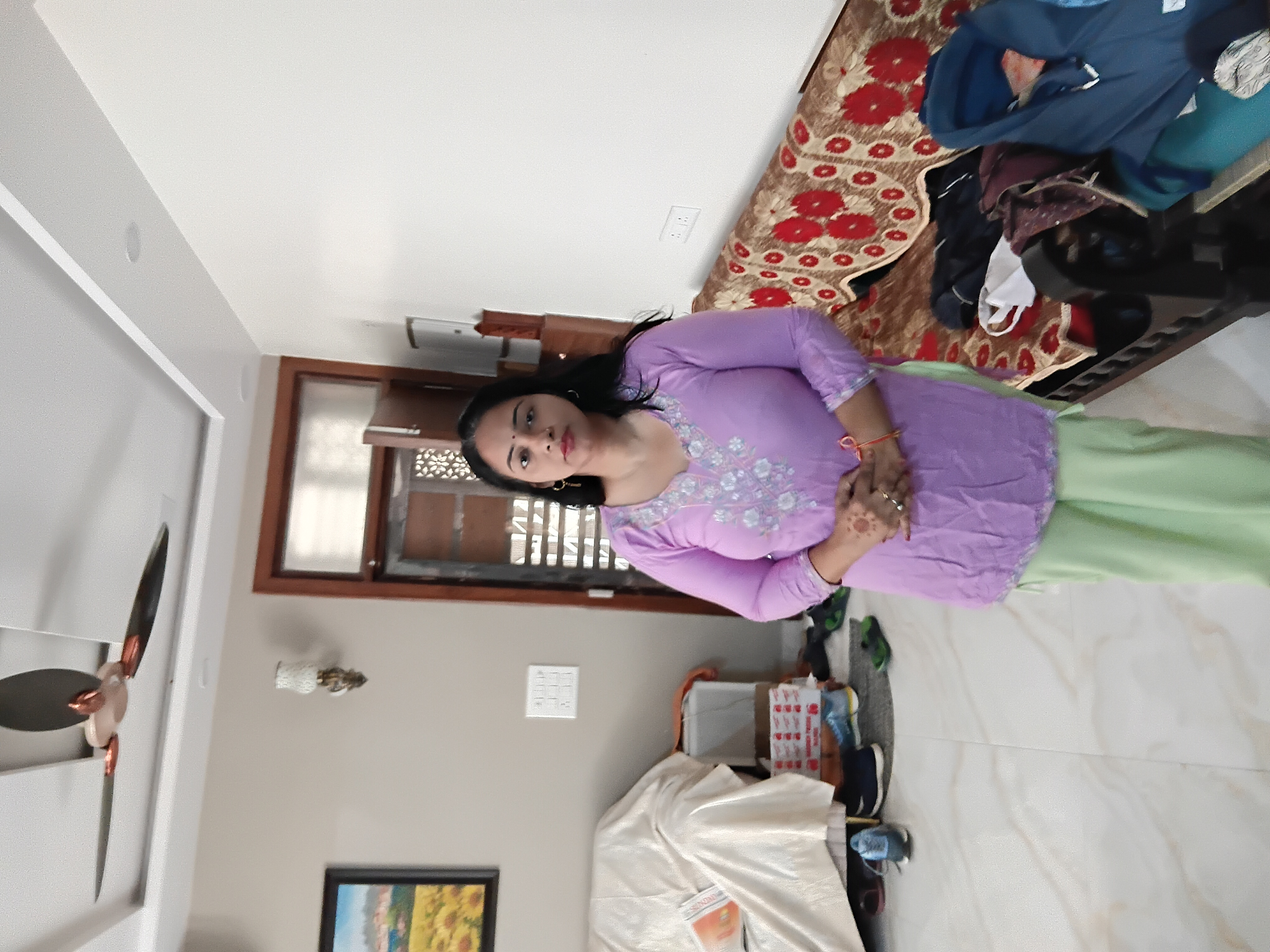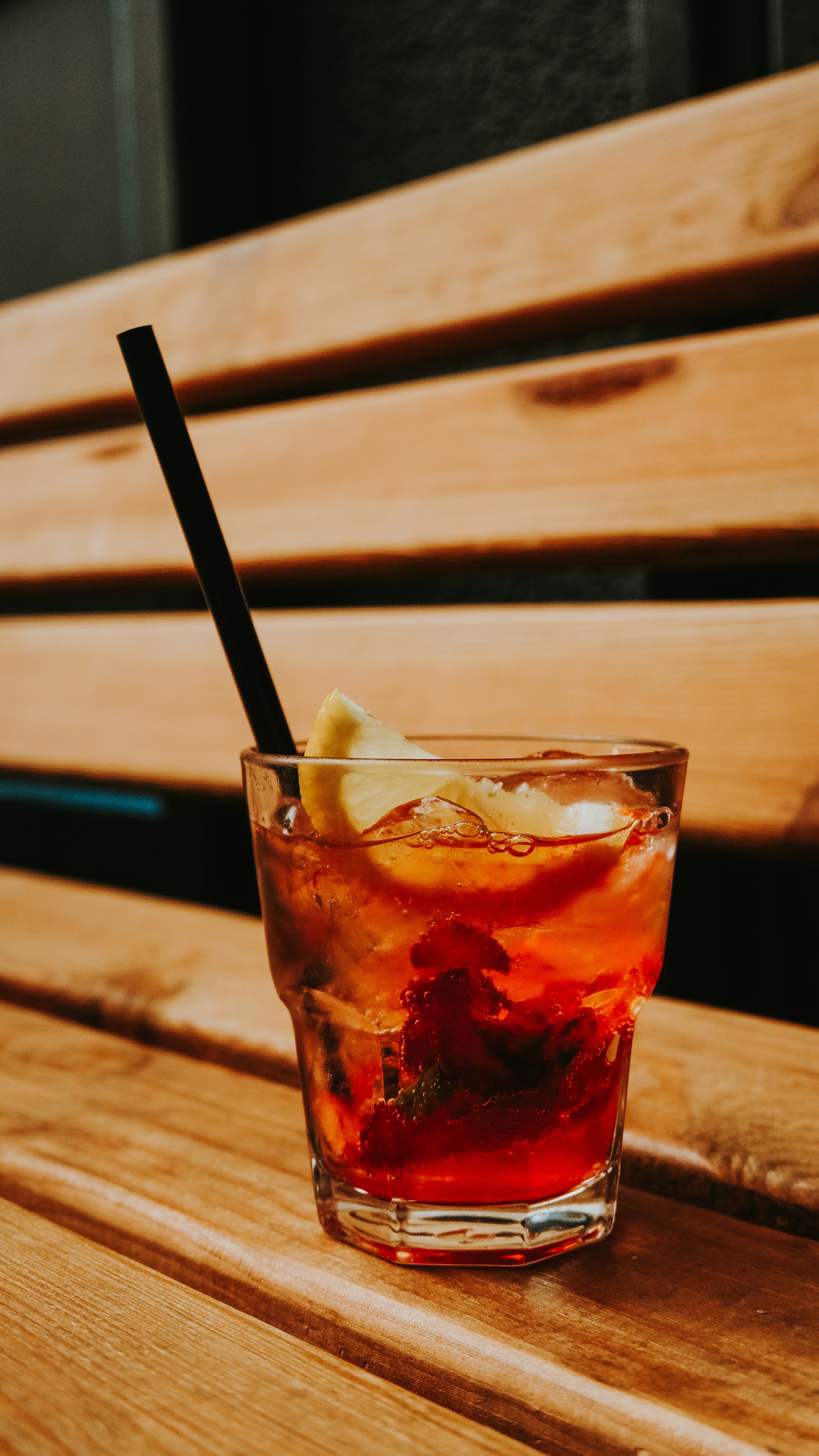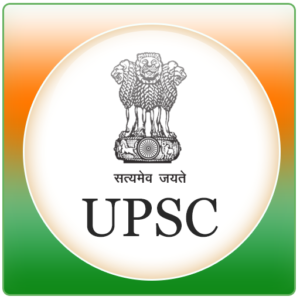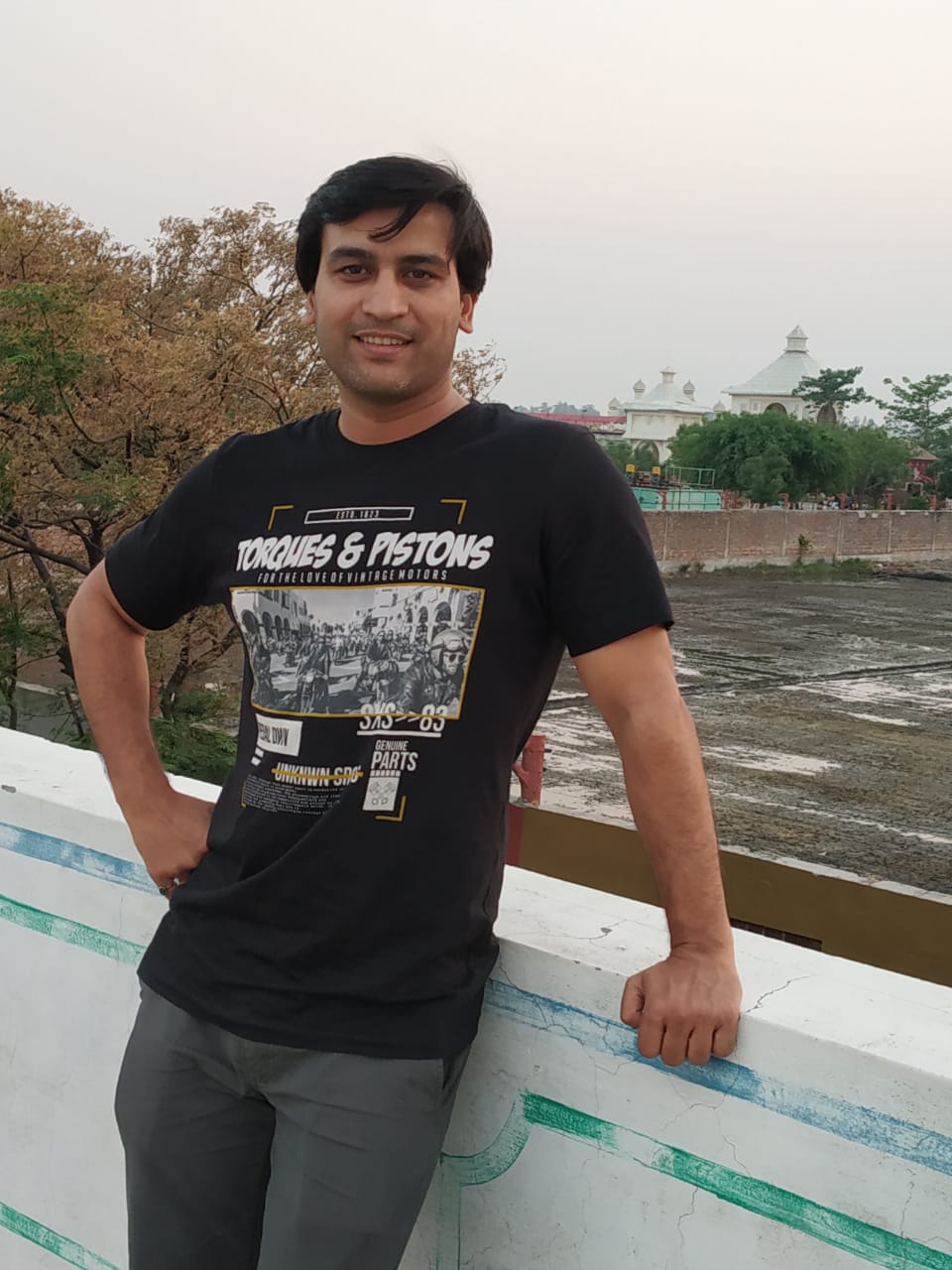Monthly trending articles on ConnectClue
Post updated on: Jun 6, 2021 8:21:05 AM
Post updated on: Jun 5, 2021 8:12:23 AM
Post updated on: Jun 5, 2021 8:05:31 AM
- First BRICS Employment Working Group (EWG) Meeting amongst BRICS Countries.
- The first BRICS Employment Working Group (EWG) Meeting was held in the virtual format in New Delhi.
- India has assumed the BRICS presidency this year.
- Prime agenda for the discussions:
- DST institute develops a new multiplex RT-PCR kit.
- Sree Chitra Tirunal Institute for Medical Sciences and Technology (SCTIMST), an Institute of National Importance under the Department of Science and Technology has developed the new multiplex RT-PCR kit.
- Significance:
- The new kit targets two SARS CoV2 genes: RdRp and ORFb-nsp14, and the human RNAse P gene as the internal control to help detect a range of mutant strains.
- Various studies have shown that RdRp and ORF1b-nsp14 genes are more sensitive in detecting Covid-19. Hence, this kit can give more precise results.
- The ORFb-nsp14 is one of the least mutated genes in Covid-19 and currently, there are no kits in the market with ORF-nsp14 as the target.
- ICMR has validated this kit at the National Institute of Virology, Pune, and found that it has 97.3% sensitivity and 100% specificity in covid-19 detection.
- Need for SSAs:
Post updated on: Jun 5, 2021 5:25:24 AM
- Foundation ingredients
- Fats and oil
- Raising agent
- Eggs
- Salt
- Liquid
- Flavoring and Seasoning
- Sweetening agent
- Thickening agents
- When heated, egg whites stiffen a mixture,
while egg yolks make it smooth, rich and slightly thick.
- Eggs are important in enhancing soup and
sauces and in binding, stuffing and purees
- In baked custards, the egg white sets the milk or cream until firm, while the egg yolk enriches it.
- Egg whites are also used to clarify stock for consomm? and aspic.
- Whole eggs or even just the egg yolks mixed with little water, form an excellent golden glaze for bread and pastries.
- Eggs are baked in the oven at 163? C in their shells so that they are tender, with coagulated white and slightly thickened egg yolk.
- Yolks of eggs are used for emulsification,
as in mayonnaise sauce.
- Similarly, whole eggs alone or mixed with a a tablespoon or two of water or oil, act as a binder for coatings for foods
to be deep-fried.
Sweetening agent: When sweetening is used with other
food it enhances the combined sensation of color and flavor of the dish produces
it also add its own sweetness and is a versatile food product its uses in the
kitchen it is varied. The types of sweetening used are sugar, treacle ( syrup obtain in refining sugar), jaggery or molasses,
syrups such as golden syrup, corn syrup, maple syrups, jam , honey and fruit
juices
- Thickening with egg, blood, cream
- Thickening with starchy vegetables like potato, tapioca etc.
- Density: The quality or condition of being dense
- Thick : Heavy in form, build, or stature
- Thin: Not dense or concentrated
- Gel: A colloid in which the disperse phase has combined with the
dispersion medium to produce a semisolid material, such as a jelly.
- Emulsion : A suspension of small globules of one liquid in a second
liquid with which the first will not mix
- Liaison: a particular consistency normally made of cream or milk with
egg yolk which can give a smooth prominent coating on a surface.
- Washing: washing of ingredients like vegetable, meat, fish etc to
remove the superficial dirt from the outer surface.
- Peeling : spoilt, soiled and in edible portions are removed. Skin of
vegetables or fruits is either peeled or scrapped the outer layer can be
stripped by steam or by blanching.
- Cutting : reducing to small pieces with a knife.
- Chopping :when a similar result is obtained when a chopping knife
or with a mechanical food chopper, the process is called chopping (small
pieces )
- Grating : reducing to small particles by rubbing on a rough surface,
as in grating lemon peels, cheese etc.
- Grinding : reducing to small fragments by crushing, as in grinding
spices, or coffee in a mill or on a grinding stone.
- Mashing : this is a method of breaking up of a soft food with pressure,
with a potato masher, or with a fork.
Post updated on: May 30, 2021 1:06:04 AM
1. Merchant
Model
- Travelocity
/ Lastminute / Top Secret Hotels
- Getaroom.com / Unpublished Rates
- booking / Hidden hotel
- GTAHotels.com / Mystery hotel
- hotel.de / hotel Roulette
- HotelsCombined.com / hotel Roulette
- TravBuddy.com / hotel Roulette
- Easyclicktravel.com / Off The Record
- HotelDirect.co.uk / Hidden Gem/ Hotels
- BookIt.com / Mystery hotel
- SuperBreak.com / Mystery Hotels
- Wotif.com / Wot hotel
Post updated on: May 28, 2021 5:58:48 PM
Assurance:
Empathy
Tangibles:
Post updated on: May 27, 2021 2:05:55 PM
2. Once downloaded unzip the zip file. Make sure you have Java 8 already installed in your machine.
3. Now you can start the solr server. Solr comes with embedded Jetty server in it. So we can directly start solr server. Solr index all data in particular Collection which is also called Core. Solr provides some collection which are already created for us. We can see the present collection in the folder --solr-8.6.2\example.
Whenever we restart solr then we need to add the name of the collection.
4. Go to folder location --\solr-8.6.2\bin and run the below command to start solr with techproducts collection
- solr -e techproducts
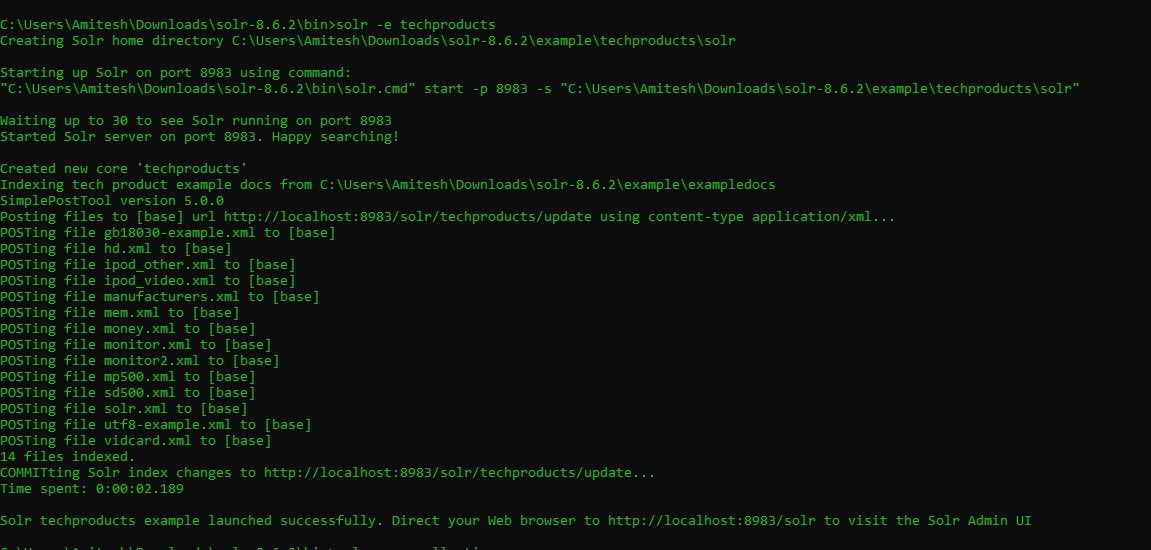
5. Once solr is started with the above message shown in screen shot then we can hit the below url to see the solr Admin UI page
http://localhost:8983/solr/#/
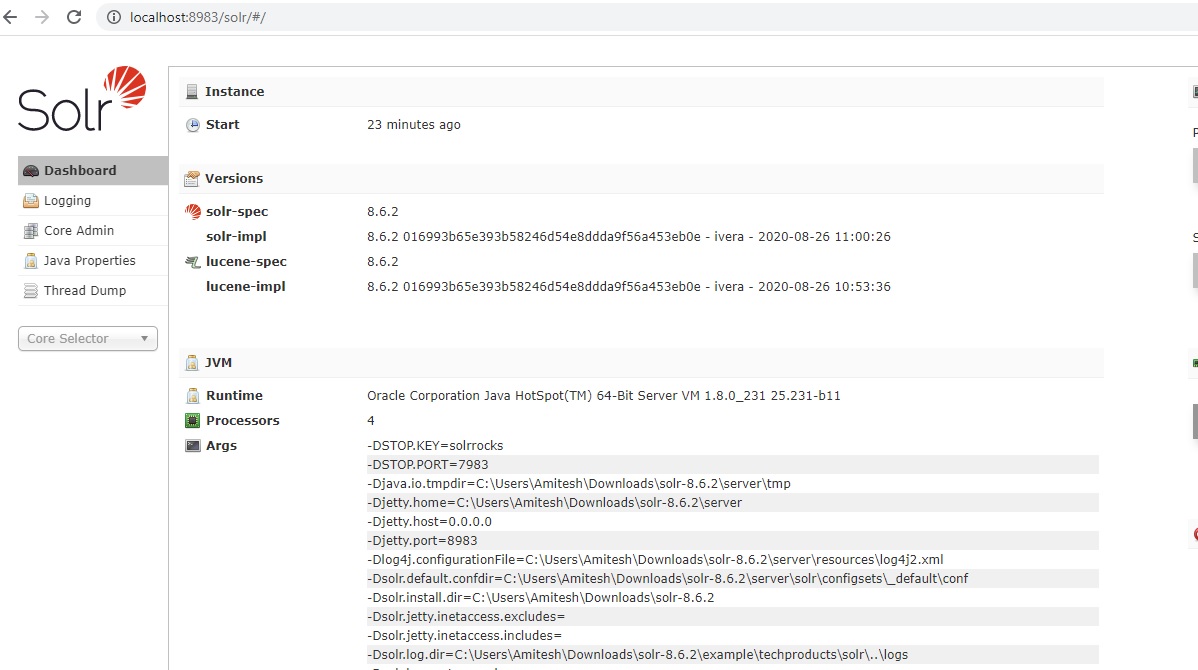
6. If you see the above screen shot then it means that solr is running and it's restarted successfully.
7. Now click on Core Selector from left side and you can see techproducts in dropdown. Select techproducts.
8. You can see all configuration for this collection techproducts.
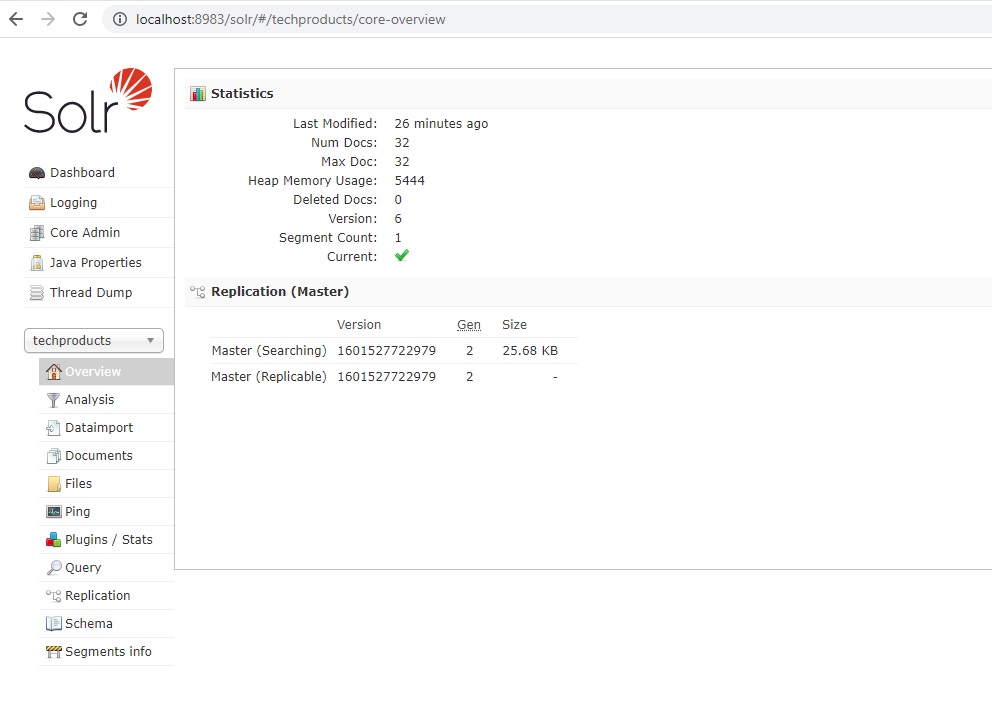
9. Click on Query tab from left panel and then click on the "Execute Query" button
10. You can see the results for the data indexed in solr. You can try this query in separate browser to see the search result.
http://localhost:8983/solr/techproducts/select?q=*%3A*
11. For adding new item in solr, add new content in XML file under \solr-8.6.2\example\exampledocs OR create a new XML file we your new content like below.
I have created a new file myfile.xml and added below data in that file
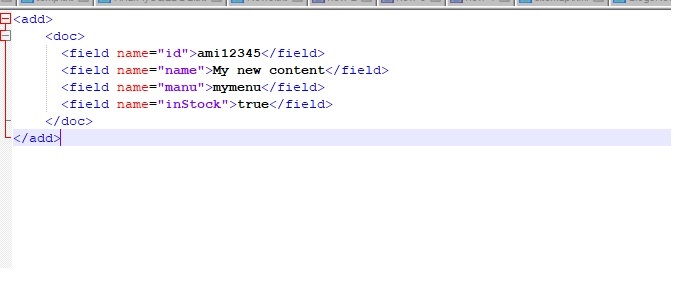
12. Now index this new data in solr by below command.
Go to folder example/exampledocs and run this command. At this folder post.jsr is already present.
- java -Dc=techproducts -jar post.jar myfile.xml

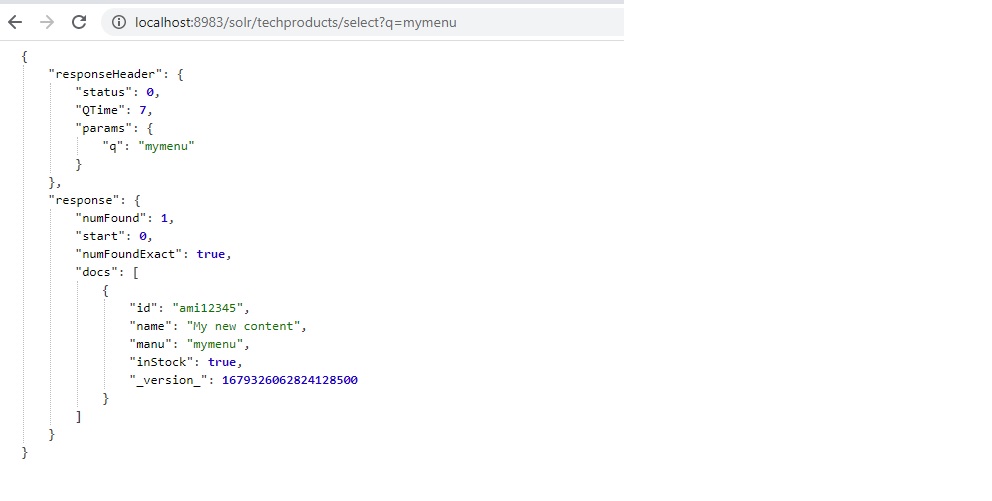
14. You can shut down solr. Go to folder location --\solr-8.6.2\bin and run the below command
- solr stop
Happy learning!!
Post updated on: Oct 11, 2020 11:50:32 PM
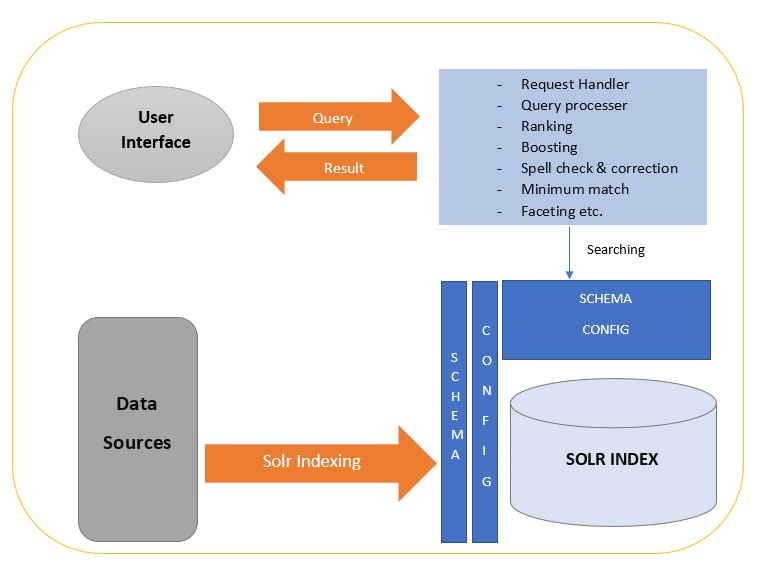
Solr is the popular, blazing fast open source enterprise search platform from the Apache Lucene project. Its major features are: powerful full-text search, hit highlighting, faceted search, dynamic clustering, database integration, rich document (e.g., Word, PDF) handling, and geospatial search. Solr is highly scalable, providing distributed search. Solr is written in Java and runs as a standalone full-text search server within a servlet container such as Tomcat. Solr uses the Lucene Java search library at its core for full-text indexing and search, and has REST-like HTTP/XML and JSON APIs that make it easy to use from virtually any programming language. Solr's powerful external configuration allows it to be tailored to almost any type of application without Java coding, and it has extensive plug-in architecture when more advanced customization is required.
Lucene uses 3 to 5 times less memory for when dealing with terms dictionary, so it's even less RAM consuming. So it provides quick search.
Faceted Searching.
Light weight application.
Schema.xml: This file is responsible to declare all fields of data feed with their type and scope for search. It first declare the data type which can be used for fields. It defines the field types and fields of documents. It can drive more intelligent processing Dynamic Fields enables on-the-fly addition of new fields in this field. CopyField functionality allows indexing a single field multiple ways, or combining multiple fields into a single searchable field. Explicit types eliminates the need for guessing types of fields. We can also provide customized data type . In that case we are required to create concerned class and need to point that class in the declaration of the data type .
It makes possible to specify that a field is a String, int, float, or other primitive, or a custom type.
It has a feature of Dynamic field definitions. If a field name is not found, dynamicFields will be used if the name matches any of the patterns. e.g. name="*_i" will match any field ending in _i (like myid_i, z_i). Longer patterns will be matched first. If equal size patterns are found then the first appearing in the schema will be used.
Solr Faceted Search Implementation:
Faceted search gives the facility to dig our searching upto bottom level. In the respect of user this helps to search from category to sub category and many more. Each facet displayed also shows the number of hits within the search that match that category. Users can then "drill down" by applying specific contstraints to the search results. Faceted search is also called faceted browsing, faceted navigation, guided navigation and sometimes parametric search.
It's relatively simple to get faceting information from Solr, as there are few prerequisites. Faceting commands are added to any normal Solr query request, and the faceting counts come back in the same query response. Solr offers the following types of faceting, all of which can be requested with no prior configuration:
Field faceting - retrieve the counts for all terms, or just the top terms in any given field. The field must be indexed.
Query faceting - return the number of documents in the current search results that also match the given query.
Date faceting - return the number of documents that fall within certain date ranges.
The current Index Searcher serves requests and when a new searcher is opened, the new one is auto-warmed while the current one is still serving external requests. When the new one is ready, it will be registered as the current searcher and will handle any new search requests. The old searcher will be closed after all request it was servicing finish. The current Searcher is used as the source of auto-warming. When a new searcher is opened, its caches may be prepopulated or "autowarmed" using data from caches in the old searcher.
Required attributes in caching.
Available SolrCache Class for implementation:
solr.LRUCache
solr.FastLRUCache
solr.LFUCache
initialSize
The initial capacity (number of entries) of the cache.
autowarmCount
It is responsible to get the searched data from old cache instead of hitting solr.It defines the size or how many data can be cached. When a new searcher is opened, configurable searches are run against it in order to warm it up to avoid slow first hits. During warming, the current searcher handles live requests.When a new searcher is opened, its caches may be prepopulated or "autowarmed" with cached object from caches in the old searcher. autowarmCount is the number of cached items that will be regenerated in the new searcher. You will proably want to base the autowarmCount setting on how long it takes to autowarm. You must consider the trade-off ? time-to-autowarm versus how warm (i.e., autowarmCount) you want the cache to be. The autowarm parameter is set for the caches in solrconfig.xml.
This is Cache warming in background
class="solr.LRUCache"
size="512"
initialSize="512"
autowarmCount="0"/>
Caches configuration is view on static page of solr for a running Solr server.
Url for static page is http://localhost:8983/solr/admin/stats.jsp
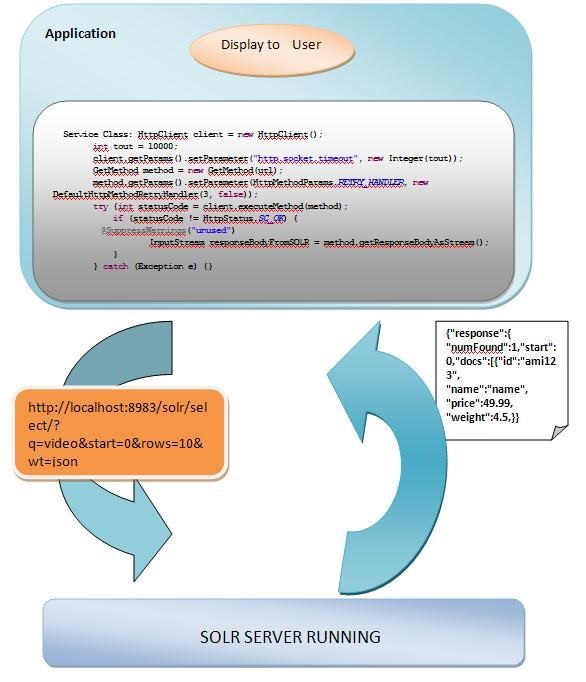
Highlighted context snippets can be used.
Faceted Searching based on unique field values, explicit queries, date ranges, and numeric ranges is key feature of Solr. Spelling check and auto suggestions are also provided for user queries, in that case it is required to manipulate solrConfig.xml for spelling check.
Queries are creating using simple java code but one can use solr API apache-solr-solrj-1.4.1.jar. Inbuilt class SolrQuery is responsible to create queries. Its different methods can be used to append different parameters in query. The above API can be used for parsing response data also or one can write own code for parsing/handling response data.
Query Example:-
Basic Parameters of Solr Query:
- q: This is the basic parameter in solr query which contains the searched content.
- Start: This parameter is used to paginate results from a query.
- Rows: This parameter is used to paginate results from a query.
- Fq: This parameters contains the condition applied on the search query.
- Fl: This parameter can be used to specify a set of fields to return, limiting the amount of information in the response.
- Sort: This parameter says that we need the response in sorted form asc/desc on a particular field basis.
- Facet: It defines weather facet search is true/false on the particular call.
- Wt: The value of this parameter defines the format of solr response.
Post updated on: Oct 1, 2020 1:51:34 AM
Post updated on: Sep 6, 2020 10:53:00 AM
Post updated on: Sep 6, 2020 10:49:17 AM
This steps are tested on Ubuntu 16.04. I have listed down some basic Linux commands also which you should be aware of.
- sudo apt install apache2
- localhost:80/
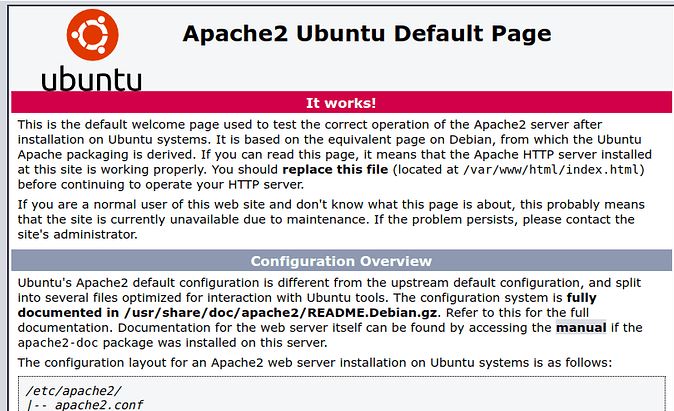
- cd /var/www/html
Open and Edit file
- vim index.html
Type "i" to enter insert mode.
Press ESC and then type ":wq!" then press Enter to save the changes and exit vim.
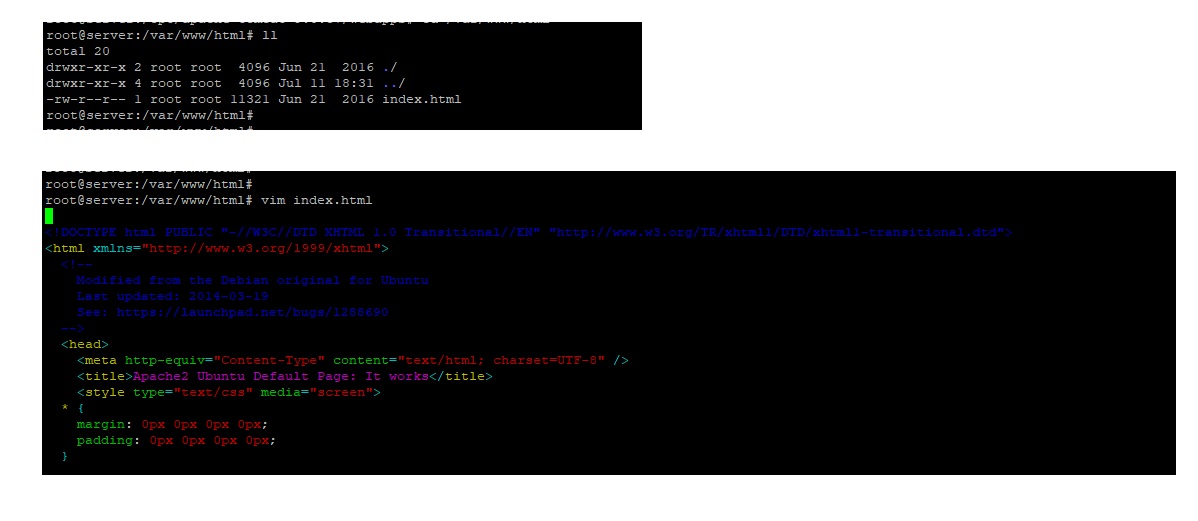
nano index.html

cd /etc/apache2/sites-available/
sudo nano myexample.conf
Add the email address in ServerAdmin email@myexample.com
Add the server name as ServerName myexample.com
Add the Document for the folder which you had already created
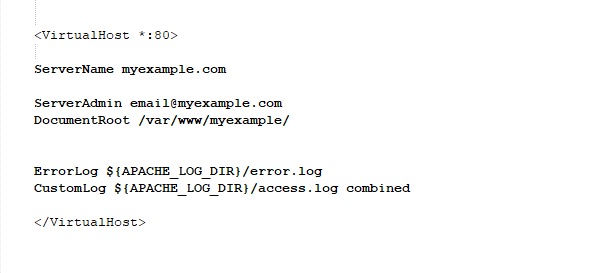
Happy learning!!
Post updated on: Sep 5, 2020 10:02:42 PM
Discover your area of interest
Advertisement
Art & entertainment
Astrology & spirituality
Cooking
Culture
Current affairs
Education
Fashion
History
Hotel management
Industry
Medical & fitness
Motivational
Politics
Real life stories
Sports
Story & poetry
Technology
Top in search
Tourism
More recent categories
Gold for sale(Public)
By: Tole
Gold Nuggets(Public)
By: Tole
Rough Diamonds(Public)
By: Tole
Uncut diamonds(Public)
By: Tole
fashion(Public)
By: Exact
Healthcare BPO Solutions(Public)
By: Gavin
Buy Gold Nuggets in Cameroon(Public)
By: nkongsamba
Gold for sale in Cameroon(Public)
By: nkongsamba
Rough Diamonds in Asia(Public)
By: nkongsamba
Others(Public)
By: Gavin


